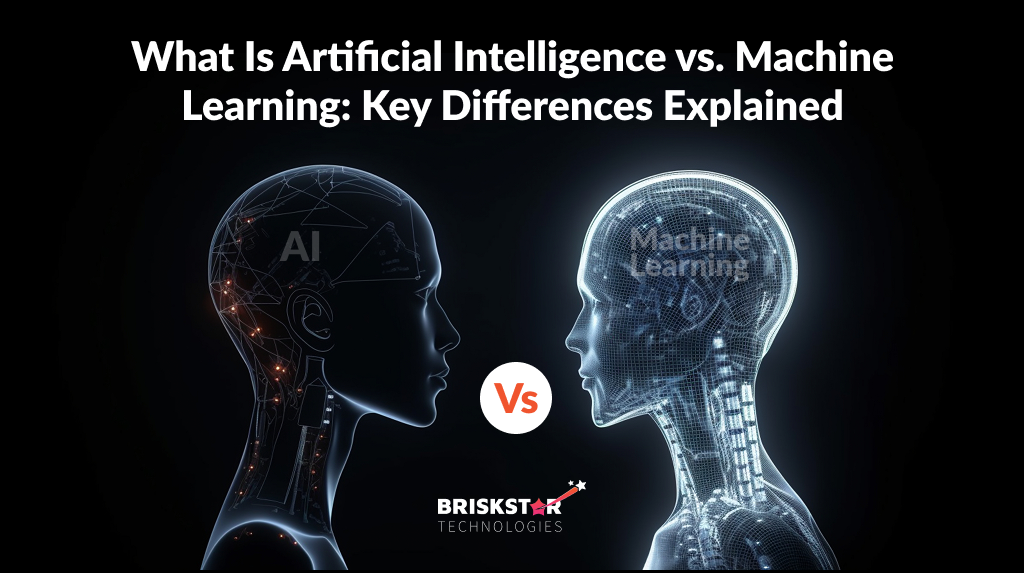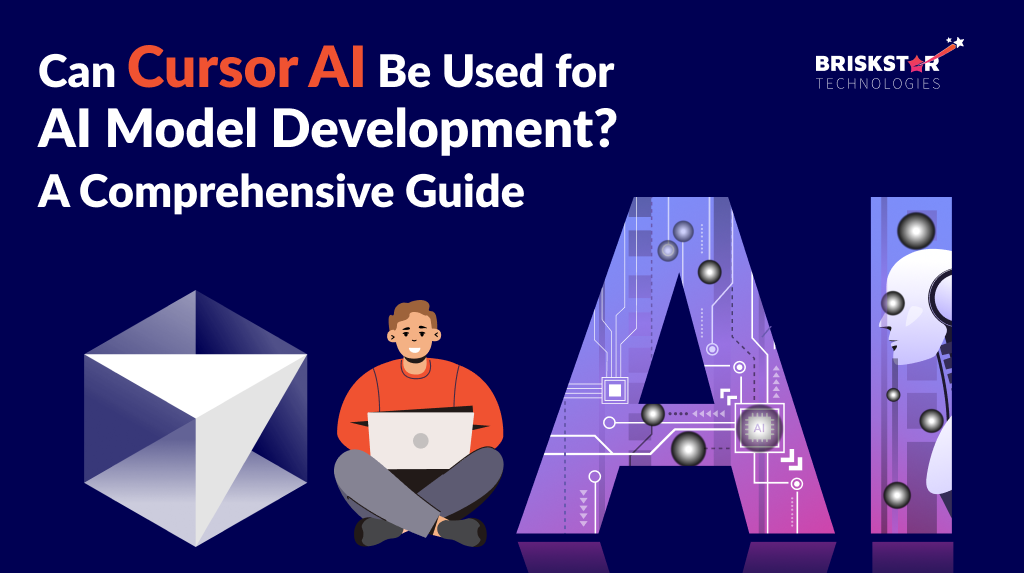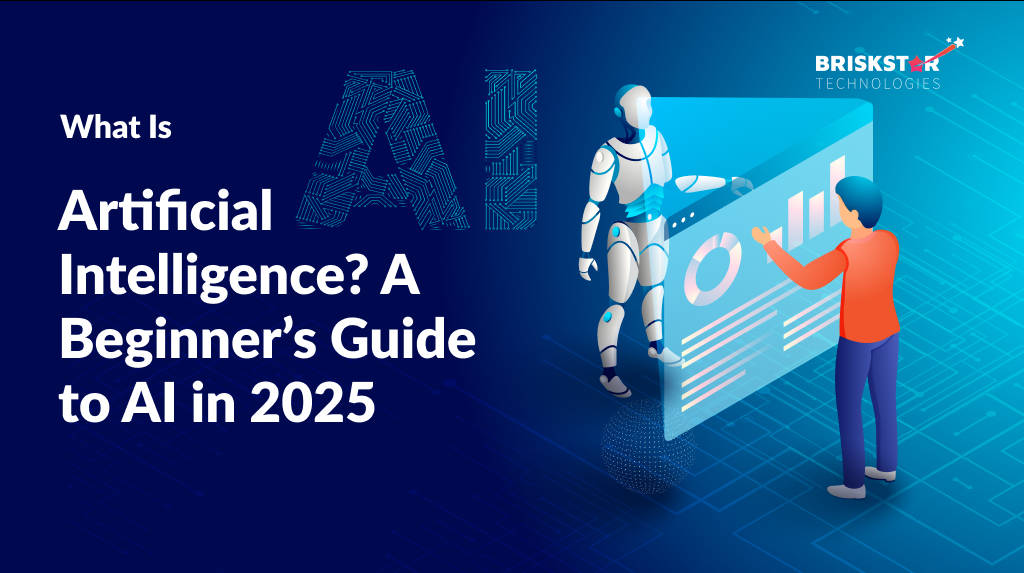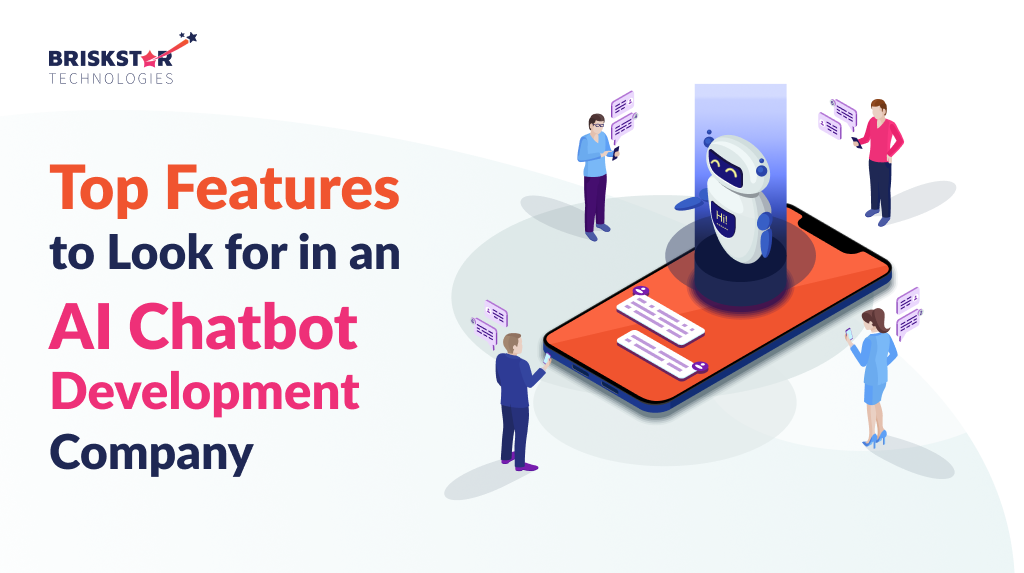What Is Artificial Intelligence vs. Machine Learning: Key Differences Explained
Artificial Intelligence (AI) and Machine Learning (ML) have become two of the most defining technologies of the 21st century. From recommendation engines to autonomous vehicles, AI and ML are shaping industries, transforming workplaces, and redefining how humans interact with machines.
Yet, despite their growing presence, these two terms are often misunderstood and used interchangeably. While they are interconnected, AI and ML are fundamentally different. AI is the broader science of making machines behave intelligently, while ML is a subset of AI that enables machines to learn from data and improve performance without explicit programming.
Understanding the distinction between these technologies is critical for businesses, developers, and decision-makers aiming to harness the potential of intelligent automation and data-driven innovation.
What Is Artificial Intelligence (AI)?
Artificial Intelligence refers to the ability of a computer system or machine to mimic human-like intelligence and behavior. It involves developing algorithms and systems that can think, reason, learn, and make decisions similar to how humans do.
AI systems are designed to interpret external data, learn from it, and use that knowledge to achieve specific goals. This could involve analyzing text, recognizing speech, detecting images, or making real-time predictions.
The Core Goal of AI
The primary objective of AI is to replicate cognitive functions such as reasoning, learning, problem-solving, perception, and language understanding. In simple terms, AI tries to make machines “smart” capable of making independent decisions or supporting human decision-making.
Key Capabilities of AI
- Perception: Interpreting sensory inputs such as vision or sound.
- Learning: Adapting through experience and feedback.
- Reasoning: Drawing logical conclusions from available data.
- Planning: Setting goals and achieving them through strategic decisions.
- Natural Language Understanding: Comprehending and responding to human language.
Types of Artificial Intelligence
When we talk about Artificial Intelligence, it’s essential to understand that not all AI systems are created equal. AI can vary in complexity, purpose, and capability from systems that simply follow instructions to those that aim to replicate human reasoning or even surpass it.
So, how many types of AI are there, and what sets them apart?
Broadly, AI is categorized into three main types based on their level of intelligence and functionality: Narrow AI, General AI, and Super AI. Each represents a distinct stage in the evolution of machine intelligence.
1. Narrow AI (Weak AI)
Narrow AI, also known as Weak AI, is the most common and widely used form of artificial intelligence today. It is designed to perform specific, well-defined tasks and operates within a limited scope. Unlike human intelligence, which can learn and adapt across multiple domains, Narrow AI functions only within the boundaries it is programmed for.
These systems rely on machine learning algorithms, deep learning models, and large datasets to perform tasks efficiently but they lack true consciousness or understanding.
Examples include:
- Google Search algorithms that deliver the most relevant web results.
- Voice assistants like Siri, Alexa, and Google Assistant that respond to user commands.
- Facial recognition systems that identify people from images or video footage.
- Recommendation engines used by Netflix, YouTube, and Amazon to suggest personalized content.
Although Narrow AI lacks independent reasoning, it’s incredibly powerful when specialized, forming the foundation for most AI applications used in businesses and consumer technology today.
2. General AI (Strong AI)
General AI, also known as Strong AI, represents the next level of artificial intelligence, a stage where machines can think, learn, and make decisions like humans. Unlike Narrow AI, which is limited to one area, General AI can apply its intelligence across multiple domains without needing human intervention.
A machine with General AI would be capable of:
- Understanding complex concepts.
- Applying logic and reasoning in unfamiliar situations.
- Learning from past experiences and adapting to new challenges.
- Exhibiting creativity and emotional understanding similar to humans.
However, General AI is still a theoretical concept. Researchers and scientists are working towards it through advanced models, neural networks, and cognitive architectures, but true human-level intelligence in machines remains a long-term goal.
If achieved, General AI could revolutionize industries leading to self-evolving systems that can teach themselves, invent new technologies, and make complex moral or emotional judgments.
3. Super AI (Artificial Superintelligence)
Super AI, also called Artificial Superintelligence (ASI), represents the final and most advanced stage of AI development, one that surpasses human intelligence in every possible dimension.
Super AI would not only be capable of performing tasks better than humans but could also possess cognitive, emotional, and social intelligence far superior to ours. It would have the ability to innovate, strategize, and make ethical or philosophical decisions autonomously.
Key characteristics of Super AI include:
- Superior problem-solving and analytical ability.
- High-level decision-making beyond human reasoning.
- Self-awareness and consciousness.
- Emotional and social intelligence surpassing human capability.
While this concept is still purely hypothetical, it sparks significant ethical, philosophical, and safety debates. Questions arise about control, accountability, and the potential risks of machines developing independent motives or consciousness.
Many experts, including prominent voices like Stephen Hawking and Elon Musk, have expressed concerns about the implications of Super AI, urging the development of ethical frameworks and regulatory measures before it becomes a reality.
What Is Machine Learning (ML)?
Machine Learning is a branch of Artificial Intelligence that focuses on enabling systems to automatically learn and improve from experience without explicit programming. Instead of following strict rules, ML algorithms use data to identify patterns, make predictions, and enhance performance over time.
At its core, ML relies on data, algorithms, and model training. The more quality data the system receives, the better it becomes at recognizing trends, predicting outcomes, and making informed decisions.
Why Machine Learning Matters
In today’s data-driven world, the volume of information being generated is enormous. Traditional programming cannot manually handle or interpret such complex datasets. Machine Learning bridges this gap by allowing computers to learn autonomously from raw data, making them smarter and more adaptable over time.
Types of Machine Learning
Machine Learning (ML) is a crucial subset of Artificial Intelligence (AI) that enables systems to automatically learn and improve from experience without explicit programming. Instead of being told what to do, ML algorithms analyze vast amounts of data, identify patterns, and make data-driven decisions or predictions. Based on how they learn and the kind of data they handle, machine learning can be broadly classified into three main types: Supervised Learning, Unsupervised Learning, and Reinforcement Learning. Each of these learning methods plays a unique role in solving different types of problems and driving innovation across industries.
1. Supervised Learning
Supervised Learning is the most widely used and practical form of machine learning. It relies on labeled datasets, meaning that each training example includes both the input and the correct output. The algorithm learns to map inputs to outputs by identifying the underlying relationship between them. Once trained, it can make predictions or classifications on new, unseen data with a high degree of accuracy.
For example, in spam email detection, the model is trained on thousands of emails labeled as either “spam” or “not spam.” Over time, it learns to identify specific words, patterns, or metadata associated with spam. Similarly, in medical diagnosis, supervised learning models analyze labeled patient data to predict diseases based on symptoms or test results. In price prediction—such as housing or stock prices the algorithm uses historical data to forecast future trends based on input features like location, size, or market behavior.
The core strength of supervised learning lies in its predictive accuracy and clarity of training objectives, but it also depends heavily on the quality and volume of labeled data. Creating such datasets can be time-consuming and expensive. Nonetheless, its widespread use across sectors like healthcare, finance, marketing, and e-commerce makes supervised learning the backbone of modern AI-driven decision systems.
2. Unsupervised Learning
Unsupervised Learning, unlike its supervised counterpart, deals with unlabeled data datasets where the output or desired result is not known in advance. Instead of predicting outcomes, the system tries to uncover hidden structures, patterns, or relationships within the data. The algorithm explores the data on its own, grouping similar items together or identifying correlations without any prior training or human supervision.
A practical example of unsupervised learning is customer segmentation, where businesses analyze large volumes of customer data (like purchase history, behavior, or preferences) to automatically group similar customers together. This helps companies design targeted marketing campaigns and improve customer engagement. Another common use case is in recommendation systems, such as Netflix or Amazon, where algorithms identify similarities in user behavior to recommend movies or products. Similarly, in market basket analysis, retailers use unsupervised learning to find associations between items frequently bought together, enabling more effective cross-selling strategies.
Unsupervised learning is particularly valuable when data labeling is not possible or practical. It enables data discovery, pattern recognition, and anomaly detection, often serving as the foundation for exploratory data analysis. However, interpreting the results can sometimes be challenging since the model does not have predefined “correct” outputs. Despite this, it remains a cornerstone for uncovering insights hidden within large and complex datasets.
3. Reinforcement Learning
Reinforcement Learning (RL) represents a more dynamic and interactive approach to machine learning. It is inspired by how humans and animals learn through trial and error. In RL, an agent learns to make decisions by interacting with its environment and receiving feedback in the form of rewards or penalties. The goal of the agent is to take actions that maximize cumulative rewards over time, thereby learning the optimal strategy or behavior for a given task.
For instance, in robotics, reinforcement learning enables robots to learn tasks like walking, grasping, or balancing by continuously adjusting their actions based on environmental feedback. In self-driving cars, the system learns to navigate roads, obey traffic signals, and avoid obstacles by interpreting sensory data and learning from experiences. A famous example is AlphaGo, an AI developed by DeepMind, which used reinforcement learning to defeat human champions in the complex board game Go by learning and refining its strategies through millions of simulated matches.
Reinforcement learning is particularly powerful for applications that involve sequential decision-making, uncertain environments, and long-term goal optimization. It is widely used in gaming, robotics, finance, and even resource management systems. However, it also requires significant computational resources and time to train, as the agent must explore many possible actions before mastering optimal behavior.
AI vs. ML: Key Differences
Artificial Intelligence (AI) and Machine Learning (ML) are two of the most transformative technologies in today’s digital era, reshaping industries and redefining how humans interact with machines. Despite their frequent overlap, AI and ML are not the same. Artificial Intelligence is the broader concept of creating systems that can mimic human intelligence capable of reasoning, learning, and problem-solving—while Machine Learning is a subset of AI focused on enabling machines to learn and make predictions from data without being explicitly programmed.
Understanding the difference between AI and ML is critical for professionals, businesses, and technology enthusiasts alike. AI represents the ultimate goal of creating intelligent systems, while ML is one of the primary pathways to achieving that goal. Both fields share the ambition of making machines smarter, but they differ in their approach, scope, objectives, and applications.
Let’s explore these distinctions in detail to gain a clearer picture of how AI and ML work, how they intersect, and why understanding their differences matters in the modern world.
AI vs. ML: Detailed Comparison
Below is a comprehensive comparison table highlighting the key differences between Artificial Intelligence and Machine Learning across major aspects such as definition, objective, approach, scope, and more.
| Aspect |
Artificial Intelligence (AI) |
Machine Learning (ML) |
| Definition |
AI is a broad field that enables machines to simulate human intelligence and perform tasks that typically require human reasoning, perception, and decision-making. |
ML is a subset of AI that allows systems to automatically learn from data and improve their performance without explicit programming. |
| Objective |
The goal of AI is to make systems capable of reasoning, understanding, and taking autonomous decisions—essentially, to behave intelligently like humans. |
The objective of ML is to develop models that learn from past data and improve their predictions or classifications through experience. |
| Approach |
AI systems use logical rules, decision trees, and knowledge-based frameworks to emulate human-like intelligence. |
ML systems rely on algorithms and statistical models that analyze patterns and relationships in data to make predictions. |
| Scope |
AI encompasses various fields, including Machine Learning, Natural Language Processing (NLP), robotics, expert systems, and computer vision. |
ML focuses exclusively on data learning, pattern recognition, and predictive modeling. |
| Human Intervention |
AI may require manual programming, rule creation, or decision logic based on expert knowledge. |
ML minimizes human involvement by enabling systems to learn automatically from data inputs. |
| Examples |
Virtual assistants (Siri, Alexa), chatbots, autonomous robots, image recognition, and smart decision systems. |
Email spam filters, credit card fraud detection, product recommendation systems, and predictive text models. |
Relationship Between AI and ML
Machine Learning acts as the engine that powers Artificial Intelligence. It provides the data-driven techniques that allow AI systems to improve autonomously.
- All ML systems are forms of AI, but not all AI systems use ML.
- AI includes other domains such as Natural Language Processing (NLP), Computer Vision, Expert Systems, and Robotics.
- ML gives AI systems the ability to adapt, evolve, and improve without human intervention.
For example, a chatbot built purely on rules is AI but not ML. However, when that chatbot learns user behavior and improves its responses, it becomes an AI system powered by ML.
Real-World Examples of AI and ML
Artificial Intelligence in Action
- Healthcare: AI assists in early disease diagnosis using imaging and pattern recognition.
- Finance: AI models detect fraudulent activities and automate risk analysis.
- Automotive: Self-driving cars interpret sensor data and make instant driving decisions.
Machine Learning in Action
- Retail: Recommendation systems on Amazon or Netflix.
- Banking: Predictive credit scoring based on user behavior.
- Marketing: Personalized ads based on browsing and purchase patterns.
AI + ML Combined
- ChatGPT and Virtual Assistants: Use AI for understanding natural language and ML to continuously improve interactions.
- Smart Cities: Combine AI vision systems with ML analytics for traffic management and public safety.
Future of AI and ML
The future of AI and ML is not about machines replacing humans but augmenting human capabilities. AI will increasingly handle repetitive, data-heavy tasks, allowing humans to focus on creativity, ethics, and strategy.
Emerging Trends
- Generative AI: Models like GPT and DALL·E are redefining creativity.
- Edge AI: Bringing AI computation closer to devices for faster response.
- Ethical AI: Focusing on fairness, transparency, and accountability.
- AI in Education & Healthcare: Personalized learning and precision medicine will dominate.
However, as these technologies expand, data privacy, bias mitigation, and accountability will be central to responsible AI and ML adoption.
Conclusion
Artificial Intelligence and Machine Learning are two sides of the same coin interconnected yet distinct. AI provides the vision of creating intelligent systems capable of thinking, understanding, and acting autonomously. ML, on the other hand, provides the practical means to achieve this vision through data-driven learning and adaptation.
By combining human creativity with the computational power of AI and ML, organizations can drive innovation, enhance efficiency, and build smarter, safer, and more responsive systems.
In today’s digital economy, understanding how AI and ML differ yet complement each other is not just beneficial but essential. The future will belong to those who can leverage both intelligently, ethically, and responsibly.
Frequently Asked Questions About Our Blog
No, Machine Learning (ML) is not the same as Artificial Intelligence (AI). AI is a broader field that focuses on building machines capable of performing tasks that typically require human intelligence like reasoning, understanding language, and decision-making. ML, on the other hand, is a subset of AI that enables systems to learn from data and improve automatically without being explicitly programmed. In short, AI is the goal, while ML is one of the methods used to achieve that goal.
Both AI and ML have significant benefits for businesses, but their suitability depends on the company’s goals and data maturity.
AI is ideal for automating decision-making, enhancing customer experiences (like chatbots or virtual assistants), and improving operational efficiency.
ML is best for data-driven insights, such as predicting customer behavior, detecting fraud, or optimizing pricing.
In essence, AI provides the intelligence, while ML provides the learning power behind it. Most modern business solutions use a combination of both to gain a competitive edge.
Yes, AI can exist without ML though such systems are often limited. Traditional AI models, known as rule-based or symbolic AI, use pre-defined rules and logic to make decisions rather than learning from data. For example, early chess programs and expert systems were AI-driven but not based on machine learning. However, modern AI heavily relies on ML because it enables adaptability, self-improvement, and higher accuracy over time.
There are several AI applications that function without machine learning. These rely on hard-coded logic, decision trees, or symbolic reasoning rather than data training. Examples include:
Rule-based chatbots that respond using predefined scripts.
Expert systems used in early medical diagnostics.
Automated control systems in manufacturing that follow fixed decision rules.
While these systems can perform specific tasks efficiently, they lack the ability to adapt and learn like ML-based AI systems.
The career scope for AI and ML professionals is expanding rapidly across industries. With organizations investing heavily in automation and data analytics, the demand for skilled AI and ML experts is at an all-time high. Career opportunities include roles such as:
Machine Learning Engineer
AI Research Scientist
Data Scientist
Computer Vision Engineer
Natural Language Processing (NLP) Specialist
Industries like healthcare, finance, e-commerce, cybersecurity, and manufacturing are leading the way in hiring talent. As AI continues to evolve, professionals skilled in ML frameworks, data modeling, and ethical AI practices will find strong, long-term career growth and global opportunities.
![circle-shapes]()











